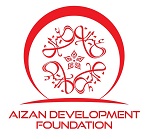On 16 May 2016 ADF conducted an assessment in Sorani town of Bannu City in Khyber Pakhtunkhwa Province of Pakistan. The assessment team was composed of four employees of ADF (Social Workers and Emergency Volunteers).
The assessment methodology was based on Key Informant Interviews for household data and Focus Group Discussions for other data. In order to assess the needs of the TDPs, a consultative study was conducted using focus group discussions with women and men separately and children being part of both groups. Random sampling technique was used because TDPs were living as tenants with the villagers. A total of 151 households of Sorani Town with 10 sub villages were present in this assessment. ADF’s Team, with the representatives of the community decided to interview 50 women and 101 men. The criterion for picking the households to take part in the study was mainly their availability and the geographical distance between settlements in order to ensure diversity in our sample. Prior to the interview, the data collectors followed a protocol that required them to introduce themselves and ADF, and the purpose of the study with an indication that no direct benefit will be received as a result of their participation. An oral informed consent was taken. The information obtained was anonymous and confidential.
Although humanitarian actors are active in providing relief assistance to these TDPs at Bannu and other areas yet there are interventions needed for the affected people on immediate response.
ADF for this purpose conducted a needs assessment through its team to highlight the existing gaps and areas for further intervention. The purpose of the needs assessment conducted by ADF was to identify the most urgent needs of TDPs living in the host communities of Sorani, Bannu in terms of overall immediate needs in order to provide appropriate help and assistance.
Objectives:
Assessment was designed to achieve the following objectives:
- To understand and prioritize the immediate needs of TDPs households
- To identify the key priority areas for humanitarian interventions
- To understand the specific needs of more vulnerable groups in society including people with disabilities, older people, female-headed households etc
- To guide the evidence-based resource mobilization and response planning of the government and humanitarian community
